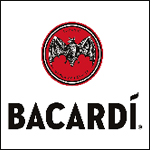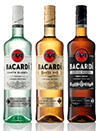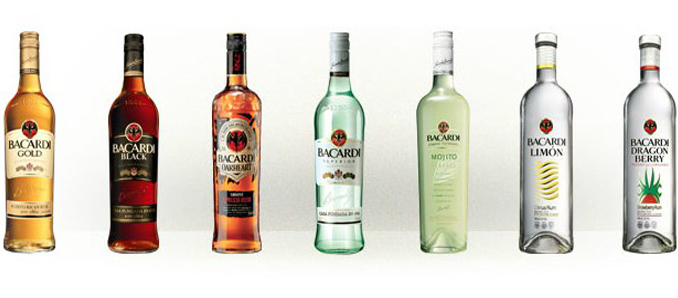 Celebrating its 153rd anniversary today, BACARDÍ rum announces the first packaging update to the world’s number one selling rum in more than a decade. Heavily influenced by Art Deco style, the new bottle design reflects the brands unique heritage and provenance, although its timeless quality ensures it looks just as good in some of the world’s finest bars today as it did in the 1920’s.
Celebrating its 153rd anniversary today, BACARDÍ rum announces the first packaging update to the world’s number one selling rum in more than a decade. Heavily influenced by Art Deco style, the new bottle design reflects the brands unique heritage and provenance, although its timeless quality ensures it looks just as good in some of the world’s finest bars today as it did in the 1920’s.
Bacardi has launched several new environmentally-friendly bottles as part of its “Good Spirited: Building a Sustainable Future” initiative. The Bacardi Classic Cocktails bottle now weighs 30% less than it did a few years ago, which Bacardi says makes shipping more streamlined, resulting in lower CO2 emissions.
Another example is the Bacardi rum bottle used for the entire line of party drinks – made of 100% recyclable PET (polyethylene terephthalate) plastic. It also requires less energy to produce than glass, lowers transportation costs and fuel emissions – and importantly, is safer than traditional glass for on-the-go venues.
 “Since glass should not be used around the pool, on a boat or at many public events, we redesigned the Bacardi Party Drinks packaging and were able to reduce the weight by 90% using PET,” said Roger Van Dusen, manager of global packaging development for Bacardi. Since 2006, Bacardi has reduced the weight of its packaging by more than 7%. The drinks brand said this weight reduction is equivalent to taking 1,100 full truckloads off the road – a significant reduction in the Bacardi carbon footprint.
“Since glass should not be used around the pool, on a boat or at many public events, we redesigned the Bacardi Party Drinks packaging and were able to reduce the weight by 90% using PET,” said Roger Van Dusen, manager of global packaging development for Bacardi. Since 2006, Bacardi has reduced the weight of its packaging by more than 7%. The drinks brand said this weight reduction is equivalent to taking 1,100 full truckloads off the road – a significant reduction in the Bacardi carbon footprint.
“Sustainability is truly a part of the Bacardi DNA, embedded way back from our founding in Cuba. The passion we have is a driving force for our environmental efforts to this day,” added Van Dusen.
Bacardi plans to reduce the weight of its packaging by 10% and achieve 15% by 2022. Operational Efficiencies: Bacardi continues to focus on reducing water use and greenhouse gas (GHG) emissions with a 2017 goal to cut water use by 55% and GHG emissions by 50%. In addition, Bacardi aims to eliminate landfill waste at all of its production sites by 2022.








